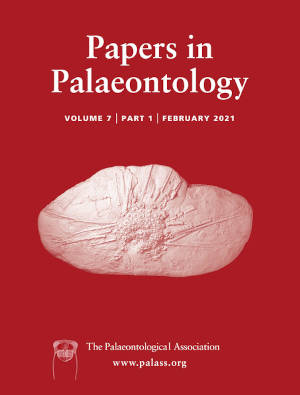Reg. Charity No. 1168330

Trilobite development has been intensively explored during the past decades, but information on ancestral character combinations in the early developmental stages of trilobites remains unknown. Trilobites of the superfamily Olenelloidea are one of the earliest diverging groups. Study of their development coupled with the development of other early diverging trilobite groups can provide information on the ancestral morphology of trilobite early stages. Herein we describe numerous well-preserved specimens of the olenelloid trilobite Fritzolenellus lapworthi. The earliest stages have circular cephala bearing intergenal spines and lacking genal spines. During subsequent development, morphological changes involve the modification of the cephalic shape from circular to semicircular, expansion of the frontal glabellar lobe, gradual shortening of intergenal spines and origin and prolongation of genal spines. Trunk development of Fritzolenellus suggests that macropleurae and macrospine development are two independent processes and that the origin of the opisthotrunk is linked with the onset of phase 5 of cephalic development. The morphology of the early developmental stages of Fritzolenellus and of some related taxa differs in many aspects from the morphology of equivalent stages of some other members of Olenelloidea. Consequently, two basic morphotypes are recognized during the early development of Olenelloidea: the Fritzolenellus and the Olenellus morphotypes. Comparison with Fallotaspidoidea and Redlichiina indicates that early developmental stages of these taxa share character combinations that are typical for the Fritzolenellus morphotype. Such a comparison suggests that characters defining the Fritzolenellus morphotype are ancestral for Trilobita. The Olenellus morphotype is probably a derived condition within Olenelloidea and might be related to predator deterrence.